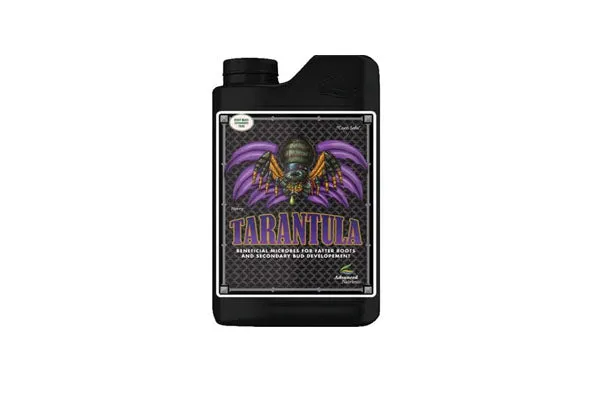What is Tarantula Advanced Nutrients?
Tarantula by Advanced Nutrients is a beneficial bacteria product designed to enhance the root zone environment of plants. It’s a complex formula containing a diverse blend of beneficial bacteria. These microorganisms work synergistically to promote robust root development, improve nutrient uptake, and fortify plant immunity. Unlike many other products, Tarantula doesn’t just add nutrients; it creates an optimal living environment within the substrate. This environment fosters the rapid growth of beneficial bacteria, which in turn provide several benefits to the plants. It’s designed for use in various growing mediums, including soil, coco coir, and hydroponic systems, making it a versatile choice for both novice and experienced growers. Properly used, Tarantula can be a key component for achieving optimal plant growth and yields.
The Benefits of Tarantula for Plant Growth
Using Tarantula Advanced Nutrients offers a multitude of advantages, leading to healthier and more productive plants. The primary benefits revolve around enhancing root health, maximizing nutrient absorption, and strengthening the plants’ natural defenses. By introducing beneficial bacteria into the root zone, Tarantula stimulates a chain reaction of positive effects that translate into vigorous growth, increased yields, and enhanced resistance to diseases. This product not only improves the plant’s internal processes but also creates a favorable environment in the growing medium that minimizes the risk of common problems, such as root rot. By understanding these benefits, growers can fully appreciate the value of incorporating Tarantula into their feeding regimen.
Enhanced Root Development
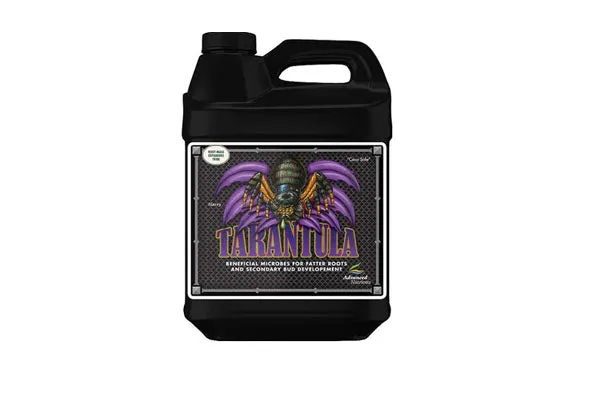
One of the most significant advantages of Tarantula is its ability to promote explosive root development. The beneficial bacteria colonize the root system, creating a symbiotic relationship. These bacteria help break down organic matter in the soil, releasing nutrients that the plant can readily absorb. A robust root system is fundamental to plant health, providing a strong foundation and enabling the plant to efficiently uptake water and nutrients. The result is a healthier, more vigorous plant that can better withstand environmental stresses. Enhanced root development also improves the plant’s ability to anchor itself, leading to increased stability and resistance to wind or other physical disturbances. A healthy root system is the cornerstone of a thriving plant.
Improved Nutrient Uptake
Tarantula significantly boosts the plant’s capacity to absorb essential nutrients. The beneficial bacteria in Tarantula help solubilize and chelate nutrients, making them more accessible to the plant’s roots. This enhanced nutrient availability translates into more efficient use of fertilizers, reducing nutrient deficiencies and maximizing growth potential. Furthermore, it helps to create a balanced nutrient environment which is essential for optimal plant health and yields. By optimizing the nutrient uptake process, Tarantula ensures that plants receive the vital elements they need to thrive throughout their various growth stages. This leads to faster growth rates, increased flower or fruit production, and a overall healthier plant.
Increased Plant Immunity
Tarantula fortifies plants by strengthening their natural defense mechanisms. The beneficial bacteria in Tarantula compete with harmful pathogens for space and resources in the root zone, preventing the establishment of diseases. They also stimulate the plant’s immune system, making it more resistant to common ailments. Healthy plants are more resilient against environmental stresses such as temperature fluctuations, drought, or pest infestations. Increased plant immunity reduces the need for chemical interventions, supporting organic growing practices. This creates a healthier growing environment and reduces the risk of crop loss. Using Tarantula contributes to overall plant vitality and ensures a better harvest.
Getting Started with Tarantula Advanced Nutrients
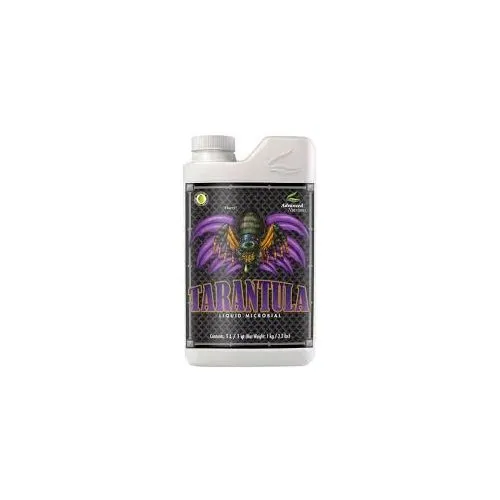
Incorporating Tarantula into your plant care routine is straightforward. The first step is to understand the product’s concentration and the recommended dosage for the specific growth stage of your plants. Always start with a small amount and gradually increase it to allow your plants to acclimate. When using Tarantula, it is important to maintain proper water quality, ensuring that the pH level is within the optimal range for the specific plants. Consistency is also key; regular applications will provide the best results. Following the manufacturer’s instructions and observing your plants closely will ensure that they receive the full benefits of this beneficial bacteria product. This product is highly concentrated and should be handled with care and stored properly.
Choosing the Right Dosage
Selecting the correct dosage of Tarantula Advanced Nutrients is crucial for achieving optimal results. Overdosing can lead to imbalances in the root zone, while underdosing might not provide the desired effects. It is important to carefully follow the manufacturer’s instructions and guidelines. These recommendations typically consider factors like the plant’s growth stage and the growing medium being used. The concentration of Tarantula should be carefully calculated to ensure that the plants receive the right amount to maximize the benefits, without causing negative effects. Always start with a lower dose, observe the plant’s response, and make adjustments as needed. Keeping a record of your feeding schedule is essential for monitoring results and making any necessary changes to dosage.
Dosage for Vegetative Stage
During the vegetative stage, when plants are focused on developing strong roots and foliage, the dosage of Tarantula is generally lower than during the flowering stage. This period is all about building a solid foundation for future growth. A recommended dosage in the vegetative stage may vary based on the specific product formulation and the plants being grown, but typically falls in the lower end of the recommended range. The purpose is to promote root growth and enhance nutrient uptake without over-stimulating the plants. Always check the product label for precise measurements. Regular applications of Tarantula during the vegetative phase promote healthy roots, efficient nutrient absorption, and vigorous growth, setting the stage for a successful flowering phase.
Dosage for Flowering Stage
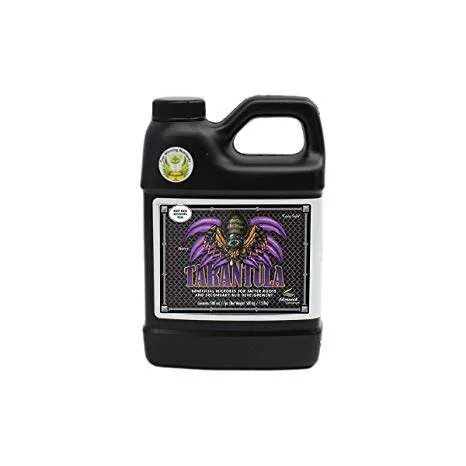
The flowering stage demands higher doses of nutrients, and Tarantula is no exception. During this critical period, plants have increased nutrient requirements to support flower or fruit production. The dosage for the flowering stage is generally higher to meet these elevated needs and maximize yields. This can vary depending on the specific plant species, Advanced Nutrients product specifications, and other growing conditions. The enhanced root health and nutrient uptake provided by Tarantula play a vital role in supporting the energetic demands of this growth phase. Higher concentrations of Tarantula are used during flowering, but always follow the manufacturer’s recommendations to ensure safe and effective use. When plants are in the flowering stage, they will require more nutrients and beneficial bacteria to support this complex process.
Mixing and Application Techniques
Proper mixing and application techniques are essential to ensure Tarantula’s effectiveness. The product should always be mixed thoroughly with water before application to distribute the beneficial bacteria evenly. Always use clean water and follow the manufacturer’s instructions for the correct concentration and application method. Avoid mixing Tarantula with harsh chemicals or other products that might kill the beneficial bacteria. Proper application techniques also depend on the growing method. The most common methods include drenching the growing medium directly, or applying it as a foliar spray. Whatever method you choose, careful attention to detail will help you optimize the benefits of this product. Always use the correct equipment to ensure an effective and consistent application.
Mixing Tarantula with Other Nutrients
Tarantula can be effectively combined with other Advanced Nutrients products and other nutrient solutions. However, it’s essential to follow the manufacturer’s recommendations and guidelines to prevent any adverse interactions. Generally, it’s recommended to add Tarantula to the nutrient solution first. After thorough mixing, introduce other nutrients. Avoid combining Tarantula with products that contain strong oxidizing agents or harsh chemicals that could harm the beneficial bacteria. Always check the compatibility of the product, and if unsure, perform a small-scale test to ensure that all components are compatible. By carefully combining Tarantula with other nutrients, you can create a synergistic feeding program that supports plant growth and maximize yields.
Application Methods Drenching vs Foliar Spray
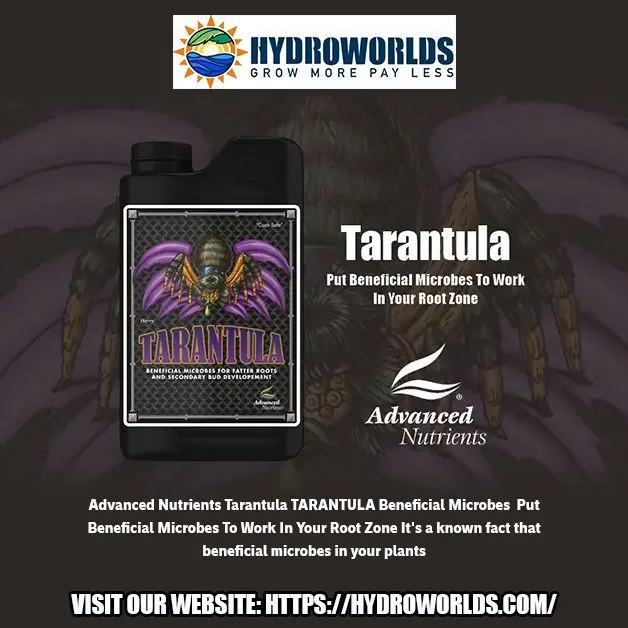
Tarantula can be applied through both drenching and foliar spray methods. Drenching involves pouring the diluted solution directly into the growing medium, which is the most common method. This ensures that the beneficial bacteria reach the roots and colonize the root zone effectively. Foliar spraying, on the other hand, involves applying the diluted solution to the leaves. It is less common but may be used to provide an extra boost to the plants. Foliar application enables the plants to quickly absorb nutrients through their leaves. When using the drench method, apply the solution evenly around the base of the plant, making sure the growing medium is thoroughly moistened. When applying as a foliar spray, apply it in the early morning or late evening to avoid leaf burn.
Maximizing Tarantula’s Effectiveness
To maximize the benefits of Tarantula, it’s important to consider a variety of factors, including the growing environment, the condition of the plants, and the application schedule. Regular use, proper dosage, and consistent environmental conditions are key to success. Observing the plants and adjusting the feeding schedule based on the specific needs and responses of the plants is also recommended. Tarantula helps to optimize plant health when integrated with other Advanced Nutrients products. Also, consider other factors, such as lighting, temperature, and humidity, to make sure the plant’s needs are being met. Careful attention to all of these factors will help you maximize the positive impact of Tarantula.
Optimizing Growing Conditions
Maintaining optimal growing conditions is essential to complement the benefits of Tarantula. Provide the plants with the appropriate light intensity, temperature, and humidity levels that are specific to the plant’s needs. Ensure that the growing medium has the right balance of aeration and drainage to prevent root rot and support healthy root development. Regularly monitor and adjust the pH of the nutrient solution to ensure that nutrients are readily available to the plants. Proper ventilation is also important to prevent excessive humidity and the buildup of pathogens. Using these factors together with Tarantula creates an environment that promotes plant growth and enhances the effectiveness of the beneficial bacteria.
Monitoring Plant Health
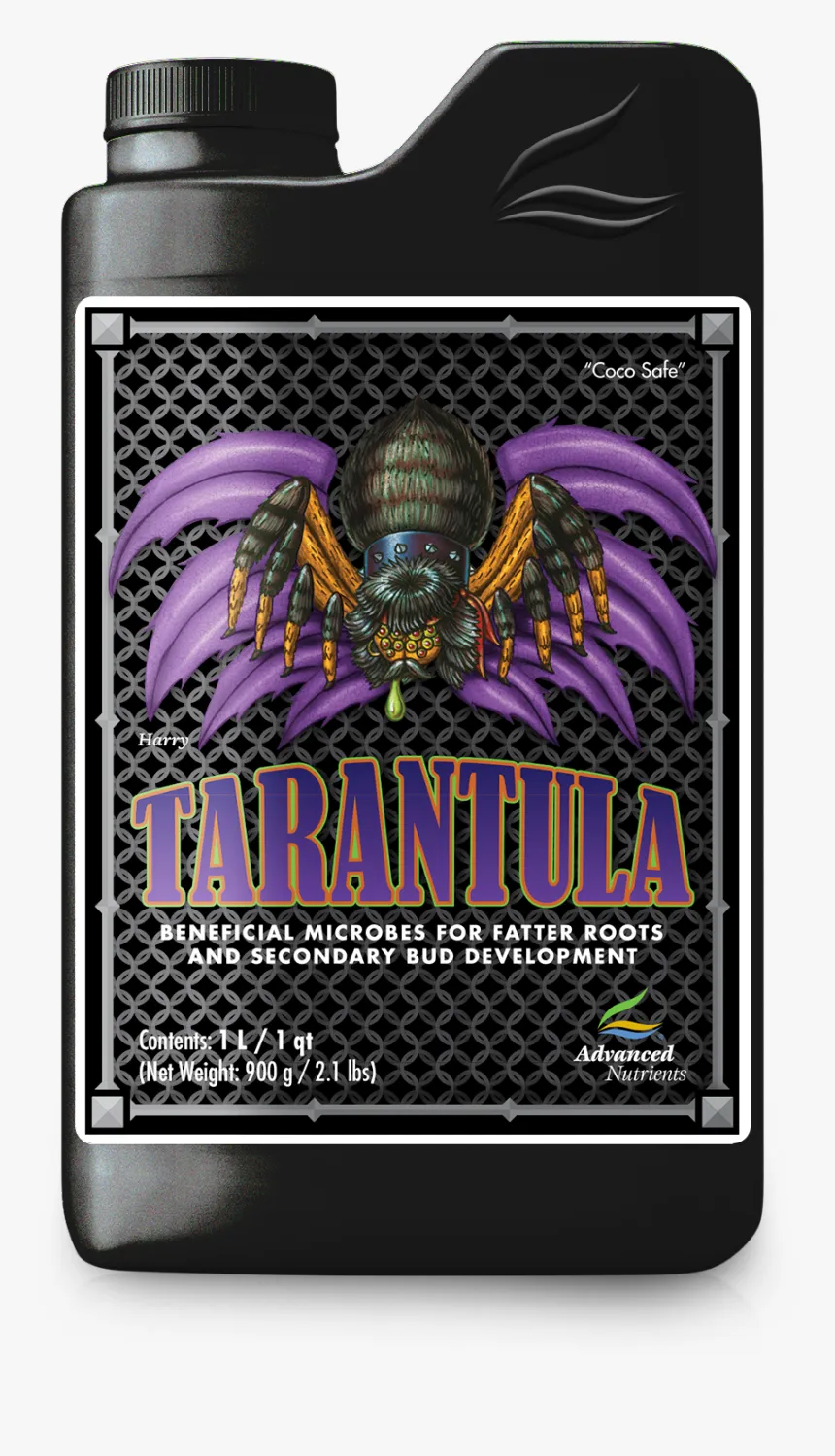
Regularly monitoring plant health is critical for identifying potential problems early and maximizing the benefits of Tarantula. Look for signs of nutrient deficiencies, diseases, or pest infestations. Closely examine the leaves, stems, and roots for any unusual symptoms. Monitor the growth rate, overall vigor, and any visible changes in plant appearance. Regularly check the pH and EC (electrical conductivity) of the nutrient solution to ensure that it is within the optimal range. Keeping detailed records of the plant’s health, feeding schedule, and any adjustments made will assist in making informed decisions and help you achieve the best results. Early detection and effective management of any issues will lead to improved plant health and increased yields.
Troubleshooting Common Issues
Even with the best practices, it’s possible to encounter problems when using Tarantula. Overuse is a common issue that can disrupt the balance of beneficial bacteria and negatively impact plant health. Pay close attention to the dosage instructions. It is important to identify any potential issues, such as nutrient deficiencies or other problems. When the plants exhibit signs of distress, it is essential to identify the cause and take steps to solve the issue quickly. Always be prepared to adjust your approach. The ability to recognize common issues and troubleshoot them is critical to successful plant care and maximizing the benefits of Tarantula.
Overuse and Its Effects
Overuse of Tarantula can lead to various problems, including an imbalance in the root zone and potential harm to the plants. Excessive use of beneficial bacteria can create an overcrowded environment, affecting the delicate balance of the ecosystem. When overuse occurs, this can lead to decreased nutrient absorption and can negatively affect the plant’s growth. Following the manufacturer’s instructions, and carefully observing the plants for any signs of distress, such as stunted growth or discoloration, is important. If symptoms appear, reduce the dosage and monitor the plant’s response. Proper use of Tarantula is key to maximizing its benefits and preventing negative effects.
Identifying Deficiency Symptoms
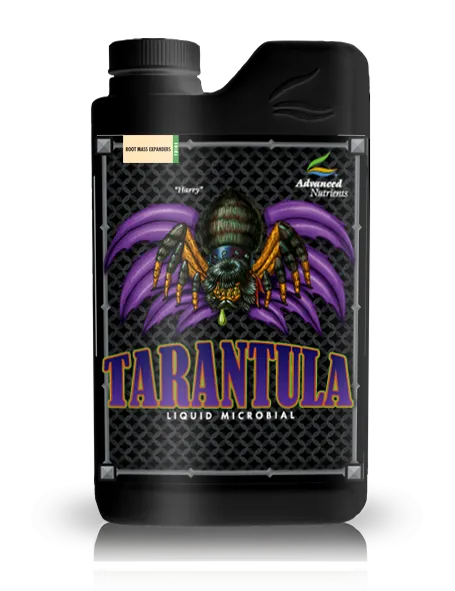
Recognizing deficiency symptoms is critical for effective plant care. These symptoms can often indicate imbalances in nutrient uptake. Signs to look out for include yellowing of leaves (chlorosis), stunted growth, and unusual spots or discoloration. Each nutrient deficiency has a specific set of symptoms that can help you determine the problem. For example, nitrogen deficiency might cause yellowing in older leaves, while iron deficiency might affect the new growth. By observing the plants regularly and comparing their symptoms to a guide, you can identify the problem and adjust your feeding schedule. Accurate diagnosis will allow you to make targeted interventions and restore the plant’s health.
Conclusion
Tarantula Advanced Nutrients is a powerful tool for enhancing plant growth. This product provides numerous benefits including improved root development, enhanced nutrient uptake, and increased plant immunity. From choosing the proper dosage to applying the product using the correct techniques, this guide has covered all the essentials of using Tarantula effectively. By understanding how Tarantula works and the ways to maximize its effectiveness, growers can achieve remarkable results, leading to healthier plants and more bountiful harvests. By following the guidelines and recommendations in this guide, you can successfully integrate Tarantula into your plant care routine, setting the stage for a thriving garden and a richer yield.
